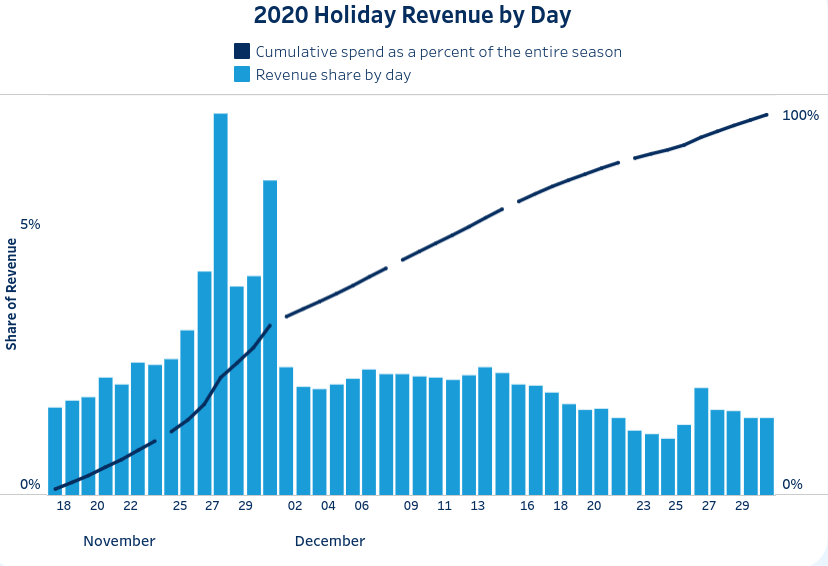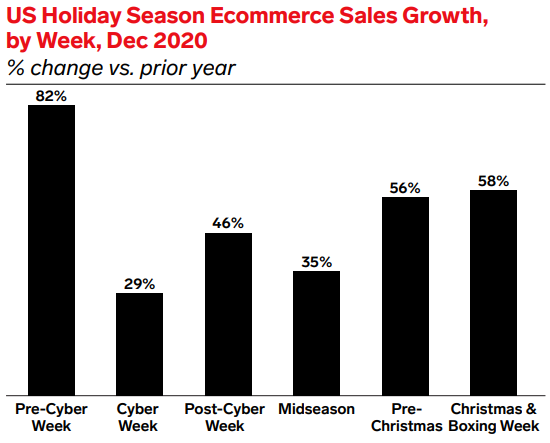Running Effective Email & SMS Marketing Campaigns with Klaviyo
When you think of the most powerful and profitable marketing channels, email probably comes
to mind first. And with good reason — it’s hard to find another channel that’s so scalable,
cost-effective, and targeted.
But without a great email marketing platform, managing these types of campaigns are about as
easy as pleasing a tired toddler, amirite?
There are a lot of email marketing tools out there that are fun, simple to use and grow your
business. But none of them are as powerful as Klaviyo. Klaviyo is a growth marketing platform
that gives businesses the power to grow faster with email marketing and automated messages
across multiple channels.
In this blog we’ll dig into some Klaviyo capabilities that help the best marketers create engaging
marketing campaigns that drive growth.
Marketing Automation: Price Drop Trigger
Klaviyo’s marketing automation, Price Drop Trigger, is ideal for ecommerce businesses (and
especially those with dynamic pricing strategies!) Easily set up automated emails to notify
specific customers about changes to an item’s price. And because these customers have
already purchased from you or browsed your website, they’re part of an audience that is already
high-intent — they’ve indicated their interest in the product already by either purchasing from
you or adding it to their cart. This means more sales for you, less time spent managing your
pricing strategy, and a better user experience overall for shoppers who won’t miss out on items
they’re interested in.
Shopify Check-out Opt-in
Customer engagement is essential for online businesses that want to thrive. The problem is that
it can be difficult to make your customers feel engaged – which is why having multiple
communications channels is recommended. You have a better chance of reaching them – and
inspiring engagement – if you’re using their preferred channel. And more and more customers
are preferring to opt-in to receive texts from brands they like. Klaviyo’s Shopify integration
makes this opt-in easy, by enabling merchants to automatically capture consent from customers
during checkout.
This integration follows all legal requirements for capturing consent, meaning you can start
sending text messages (SMS) right away. Texts have a high open rate, making them a powerful
tool in your marketing arsenal. You can use them to send order updates, promotions and sales
info, or price drops. But to do that, you have to get that consent first.
Utilizing Data and a NoSQL Database
An ecommerce platform collects a massive amount of visitor data. If you’re like most online
retailers, however, you’re not taking advantage of this information to improve your marketing
results. Klaviyo collects and organizes customer data so you can use it to target your marketing
campaigns more effectively. Unlike traditional relational databases, Klaviyo is a NoSQL
database, which handles data differently, processing data faster so marketers have better
information about their customers.
Understanding how your visitors experience your site is valuable information that helps you
better understand your audience. If someone has been browsing on your site for several hours
but hasn’t made a purchase yet, that’s very different from someone who drops off after only two
minutes. You should be targeting these two groups differently from a promotional perspective.
Key data points to track:
● Views of a specific product pages
● Return visitors
● Abandoned Cart rates
● Views of marketing messages, whether email or SMS
Automated SMS Campaigns (and when NOT to use them)
SMS is a marketing channel that marketers have only just begun using, but with high open rates
and most messages viewed within minutes of being sent, it’s clear that this is a valuable tool in
the marketer’s kit. With SMS, you’re not competing with other brands for attention because most
businesses haven’t yet adopted this strategy.
Automating SMS campaigns can help you triage customer communications so employees can
focus on genuine customer issues faster. Issues like customer surveys, review requests and
shipment tracking likely don’t need much human involvement, so those types of messages are
easy to automate. But being able to respond to a disgruntled customer within a couple of hours,
or even mere minutes, goes a long way to repairing the situation – and those interactions
shouldn’t be automated.
Coordinate SMS + Email Marketing Campaigns
Communicating with your audience through a combination of SMS and email is a great way to
boost your marketing ROI. Your audience is more likely to see your message, since you’re
sending it through multiple channels. This is especially true for SMS: the average text open rate
is 98%, while the average email open rate is roughly 20%.
When you use both SMS and email marketing, you can test which formats and messages work
best for your audience. Some audiences prefer one channel over another, but others will
respond well to both.
The marketing messaging shouldn’t be exactly the same though. Texts should be short with only
one call-to-action (CTA), while emails can be longer and include multiple CTAs. Texts can work
extremely well for price decreases or limited-time-only promotions, while emails are better for
sharing your latest blog post, lookbook, or new brand collaborations.
3 Klaviyo Workflows to Use Right Now to Increase Engagement (and Revenue!)
Email marketing campaigns can be useful for a wide variety of communication needs – but
manually managing those campaigns is a chore. These three automated workflows will help to
address potential gaps in your sales funnel, build stronger customer relationships, or recapture
interest.
● Back in Stock
Automatically sends an email to customers who have signed up for product notifications
when an item has been restocked.
● Thank You
Let new and returning customers know you appreciate their business with a customized
thank you email.
● Abandoned Browsing
An abandoned browsing email flow can capture customers that may not be ready to buy they didn’t put any items in their cart – but they have shown interest by viewing one or
more product pages. These emails should share additional benefits of the product or
recommend similar products.
Conclusion
Marketing with Klaviyo allows marketers to create a data-driven marketing strategy that will
deliver more effective, targeted outreach. The platform is all about connecting you to the right
customers, making it the perfect tool for digital marketing.
Need some help setting up email and SMS campaigns that deliver measurable results? Contact
the team at 565media.com.




